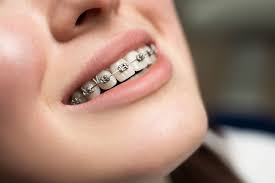Many people wonder, how long does it take to straighten teeth with braces? The answer varies based on several individual factors, but understanding the typical timeline and what influences the process can help set realistic expectations. Dental Braces work by applying steady pressure to move teeth into their ideal positions, but the speed of this movement depends on your unique dental structure, the severity of misalignment, and the type of braces used.
- Treatment generally ranges from 12 months to 36 months
- Severity of misalignment directly affects duration
- Patient age and bone density influence tooth movement speed
- Type of braces can impact treatment time
- Regular orthodontic visits ensure progress and adjustments
Knowing what to expect can help you stay motivated during your journey to a straighter smile.
Factors Influencing Treatment Duration:
The length of time required to straighten teeth with braces is influenced by multiple key factors that your orthodontist will assess before starting treatment.
- Severity of misalignment: Mild cases can take as little as 6 months, while complex issues may need several years
- Age: Younger patients typically experience faster tooth movement due to more malleable bone structure
- Type of braces: Traditional metal braces often work faster than clear aligners or ceramic braces
- Patient compliance: Following orthodontist advice, such as wearing elastics or avoiding certain foods, speeds up treatment
- Oral health: Healthy gums and teeth contribute to smoother progress without complications
A personalized treatment plan considers all these factors to estimate the timeline accurately.
Average Treatment Times for Different Braces:
Different types of braces have varying impacts on how long it takes to achieve the desired results.
- Metal braces: Usually the fastest option with treatment lasting 18 to 30 months
- Ceramic braces: Slightly longer duration, often 20 to 36 months, due to more fragile material
- Lingual braces: Hidden behind teeth but may take longer because of complexity, up to 36 months
- Clear aligners: Treatment time varies widely, typically 12 to 24 months for mild to moderate cases
- Self-ligating braces: These can sometimes reduce treatment time by a few months due to reduced friction
Consulting with your orthodontist helps select the best appliance for your needs and timeline.
Typical Treatment Phases:
Understanding the stages of Dental Braces Treatment gives insight into the timeline and what to expect at each step.
- Initial alignment: The first few months focus on straightening crooked teeth
- Space closure: Gaps between teeth are closed, which can take several months
- Bite correction: Elastics or other devices help align the bite, requiring additional time
- Finishing: Final adjustments to perfect tooth positions and ensure stability
- Retention: After braces removal, retainers maintain the new alignment to prevent relapse
Each phase varies in length based on your treatment plan and progress.
Tips to Speed Up Braces Treatment:
While the timeline is influenced by biology, there are ways patients can help optimize the process.
- Attend all scheduled orthodontic appointments for timely adjustments
- Follow dietary recommendations, avoiding hard or sticky foods that damage braces
- Wear rubber bands or other appliances exactly as prescribed
- Maintain excellent oral hygiene to prevent gum disease or cavities that delay progress
- Discuss any discomfort or concerns with your orthodontist promptly to avoid setbacks
Active participation improves the efficiency and success of your treatment.
What Happens After Braces Are Removed?
Straightening teeth with braces is just part of the process; post-treatment care is crucial to maintain your results.
- Retainers are worn to hold teeth in their new positions, usually full-time initially, then at night
- Regular dental checkups ensure teeth remain healthy and aligned
- Avoid habits like nail-biting or chewing hard objects that can shift teeth
- Some patients may need minor adjustments or refinements post-braces
- Lifelong retainer use is often recommended to prevent relapse
Proper aftercare secures your investment and preserves your beautiful smile for years to come.





Comments